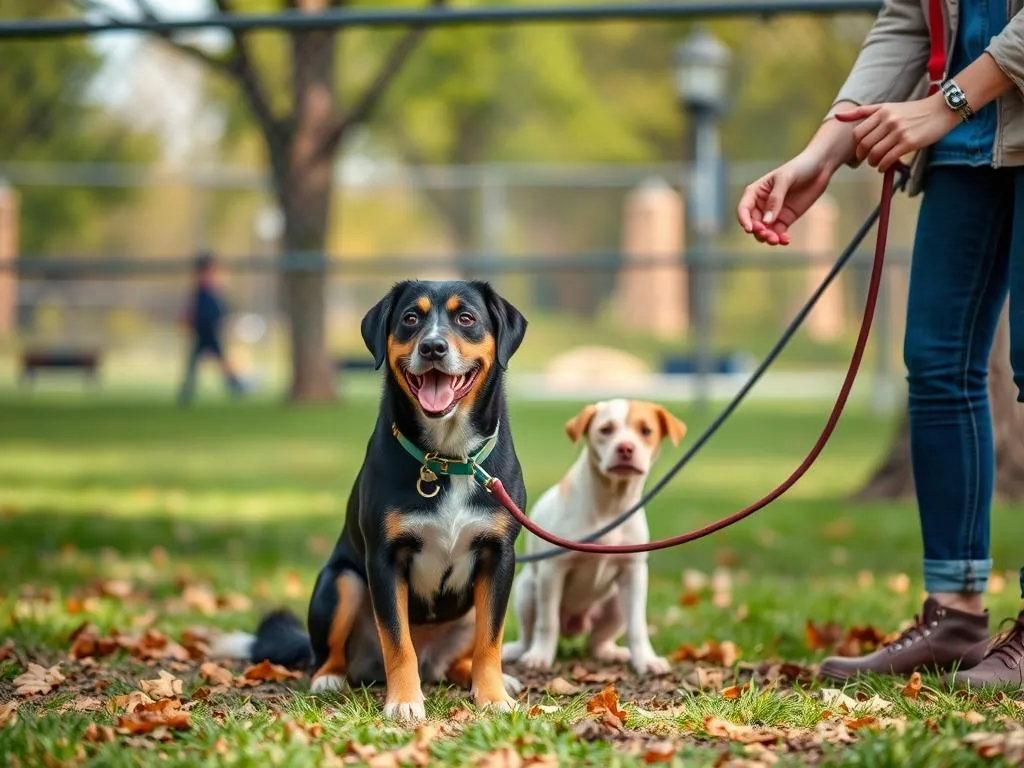
Introduction
As a dog owner, one of the most delightful experiences is watching your furry friend frolic freely in a dog park. These parks serve as essential social spaces for dogs and their owners, allowing for interaction, play, and exercise. However, with the joy of these communal environments comes the responsibility of following proper dog park etiquette rules. Understanding and practicing these guidelines not only ensures a pleasant experience for you and your dog but also promotes a harmonious atmosphere for all park-goers.
In this article, we will delve into the significance of dog park etiquette rules, explore the benefits of dog parks, and provide comprehensive guidelines to enhance your experience. From basic rules to specific situations, we aim to equip you with the knowledge necessary to be a responsible dog owner and a courteous member of the dog park community.
Understanding Dog Parks
What is a Dog Park?
A dog park is a designated area where dogs can play and socialize off-leash in a secure environment. The primary purpose of these parks is to provide a safe space for dogs to exercise, interact with other dogs, and enjoy the outdoors. Dog parks can vary significantly in design and rules, with some being fenced while others may be unfenced. Additionally, some parks are specifically tailored for certain breeds, ensuring that dogs with similar sizes and temperaments can play together safely.
Benefits of Dog Parks
Dog parks offer a myriad of benefits for both dogs and their owners:
- Socialization for Dogs: Regular visits to the park help dogs develop social skills and learn appropriate behaviors by interacting with other dogs.
- Opportunities for Owners to Connect: Dog parks provide a community space for owners to meet, share experiences, and exchange tips on pet care.
- Physical Exercise for Dogs: Dogs require regular exercise to maintain their health and happiness. Dog parks offer ample space for running, playing fetch, and engaging in other physical activities.
General Dog Park Etiquette
Basic Rules to Follow
To ensure a positive experience for everyone, it’s essential to adhere to some basic dog park etiquette rules:
- Keep Your Dog Leashed Until Inside the Park: Always have your dog on a leash until you enter the designated off-leash area. This prevents potential conflicts or accidents at the entrance.
- Clean Up After Your Dog: Carry waste bags and promptly pick up after your dog. Not only is this respectful to other park users, but it also helps keep the park clean and safe.
- Supervise Your Dog at All Times: Always keep an eye on your dog while in the park. This helps you intervene if any issues arise and ensures your dog is safe.
Respecting Other Dogs and Owners
Understanding and respecting the space of other dogs and their owners is crucial. Here are some tips:
- Understanding Dog Body Language: Familiarize yourself with dog body language to recognize signs of discomfort or aggression. This knowledge can help you prevent conflicts before they escalate.
- Avoiding Confrontations: If a disagreement arises between dogs, remain calm and avoid escalating the situation. Instead, redirect your dog’s attention or remove them from the conflict.
Time Management and Sharing Space
Consideration for others extends to how you manage your time and space within the park:
- Be Mindful of How Long You Stay: While it’s great to enjoy the park, be aware of how long you occupy the space, especially during busy hours.
- Sharing Space: If the park is crowded, be courteous about sharing space and allowing other dogs to play. This promotes a friendly environment for all.
Specific Etiquette Guidelines
Before Entering the Park
Preparation is key to a successful trip to the dog park. Here are some guidelines:
- Ensure Your Dog is Healthy and Vaccinated: Before heading to the park, ensure your dog is up-to-date on vaccinations and is in good health. This helps prevent the spread of diseases.
- Bring Necessary Supplies: Always carry essential items such as water, waste bags, and toys. Hydration is crucial, especially during warmer months.
While in the Park
While you and your dog are enjoying the park, keep these points in mind:
- Keep a Safe Distance from Aggressive Dogs: If you notice a dog exhibiting aggressive behavior or showing signs of fear, maintain a safe distance to prevent potential conflicts.
- Avoid Bringing Food or Toys: Food can provoke jealousy among dogs, and toys can lead to disputes. It’s best to leave these items at home.
- Be Aware of Your Dog’s Behavior: Monitor your dog’s interactions and be ready to intervene if necessary. This is vital for maintaining a peaceful environment.
After Leaving the Park
Your responsibilities don’t end when you exit the park:
- Clean Your Dog Before Leaving: Take the time to remove dirt and debris from your dog before heading home. This helps keep your house clean and reduces the spread of dirt.
- Encourage Good Behavior at Home: Reinforce the positive experiences your dog had at the park by encouraging good behavior at home. This can help your dog learn to associate positive experiences with social interactions.
Common Etiquette Mistakes to Avoid
Ignoring Signs and Rules
One of the most critical aspects of dog park etiquette rules is adhering to posted signs and regulations. Ignoring these rules can lead to uncomfortable situations for everyone involved. Always take a moment to read and understand the rules of the park before entering.
Allowing Unruly Behavior
Allowing your dog to behave unruly can create chaos in the park. If your dog is displaying aggressive behavior or is overly rowdy, it’s your responsibility to intervene and correct their behavior. Failure to do so can result in negative experiences for other dogs and their owners.
Failing to Communicate
Communication is vital in a shared space like a dog park. Before introducing your dog to another, it’s courteous to check in with the other owner. This can help avoid misunderstandings and ensure that both dogs are comfortable interacting.
Special Considerations
Dog Park for Puppies vs. Adult Dogs
When introducing puppies to the park, it’s essential to consider their unique needs:
- Tips for Introducing Puppies: Start with short visits to the park to help your puppy get accustomed to the environment. Supervise closely, and choose playmates that are gentle and patient.
- Special Considerations for Senior Dogs: Senior dogs may require more space and less rough play. Be mindful of their physical limitations and ensure they have a safe area to rest.
Dog Parks and Different Breeds
Every breed has its own set of behaviors and needs:
- Understanding Breed-Specific Behaviors: Familiarize yourself with the characteristics of your dog’s breed to better understand their behavior in social situations.
- Socializing Diverse Breeds: It’s important to expose dogs of various breeds to one another in a safe manner. This promotes healthy interactions and reduces breed-related biases.
Handling Emergencies
Even in well-managed parks, emergencies can occur:
- What to Do in Case of a Dog Fight: If a fight breaks out, remain calm. Avoid physically intervening unless absolutely necessary. Instead, try to distract the dogs using loud commands or throwing water.
- First Aid Tips: Learn basic first aid for dogs and know when to seek veterinary help, especially if your dog is injured during play.
Conclusion
In conclusion, adhering to dog park etiquette rules is essential for creating a positive experience for both dogs and their owners. By following these guidelines, you contribute to a safe and enjoyable environment that allows dogs to thrive socially while fostering connections among pet owners.
Being a responsible pet owner extends beyond your home and into community spaces. By practicing good etiquette, you not only enhance your experience but also promote a culture of respect and consideration in dog parks everywhere.
As you head to your local dog park, remember these principles, and enjoy the delightful moments shared between you and your furry friend.









